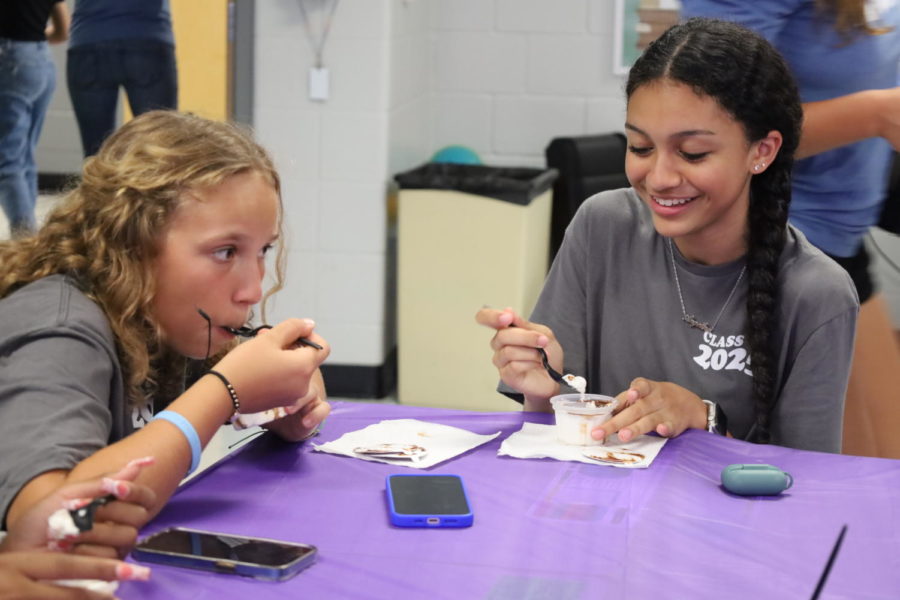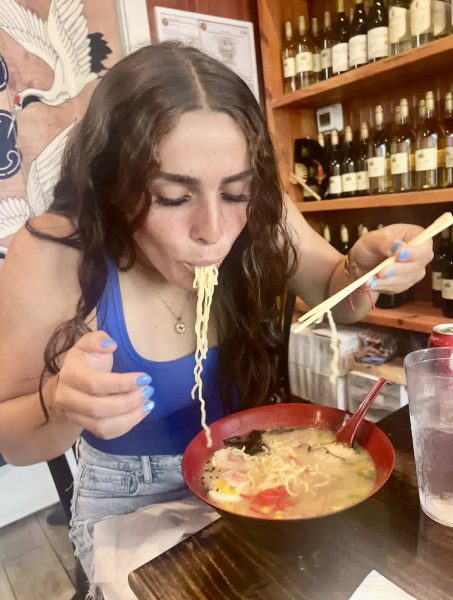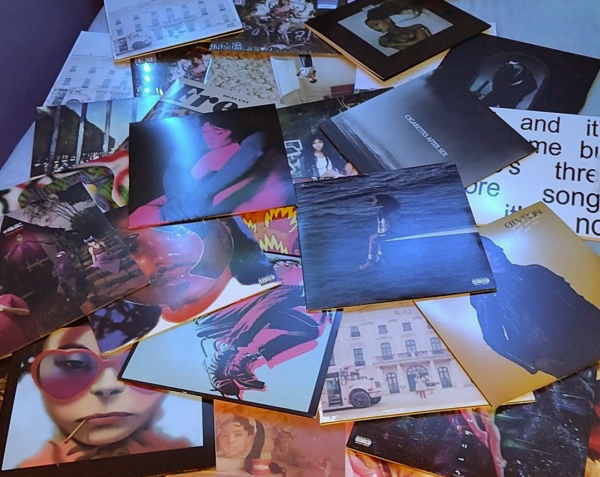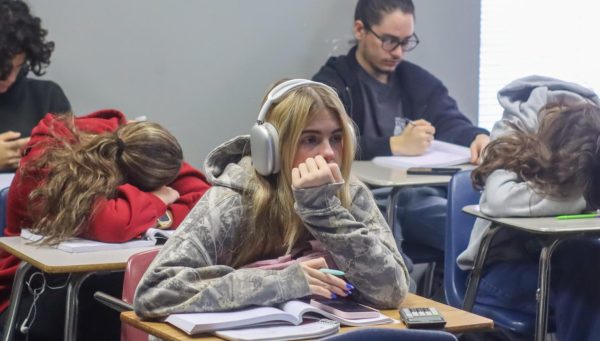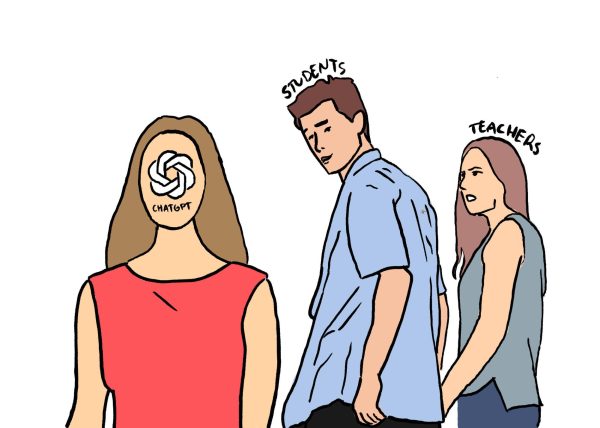Part of the crowd
With over 250 ESE students this year, Hagerty’s ESE programs have expanded to fit their students’ needs with the creation of PIT crew and the expansion of Best Buddies.
photo by Janell Lim
Sophomores Gabriella Heina and Angelina Acero enjoy some ice cream while playing a word game during the Best Buddies ice cream social on Aug. 26. Best Buddies members like Heina and Acero are partnered up with an ESE student as a buddy throughout the year. Activities include eating lunch with them, meeting them during break and participating in the Best Buddies friendship walk, a national fundraiser in April.
Twenty-eight years ago, Heather Ambrosi volunteered at the Special Olympics, cheering on athletes with disabilities as they raced down the track. Twenty-eight years ago, she found her passion in Special Education. Today, Ambrosi is one of eight Exceptional Student Education teachers who serve over 250 students at Hagerty, with classes ranging from Learning Strategies to Social Personal Skills.
ESE is defined as specially designed instruction for students with disabilities. These disabilities include an autism spectrum disorder, a speech impairment disorder or an emotional or behavioral disability.
When a student is eligible for ESE services, the classes they are placed in can range from AP courses to self-contained classrooms, depending on the severity of their disability. In self-contained classrooms, one teacher instructs students on all their core subjects using a tailor-made curriculum. In ESE teacher Tammy Harris’ class of 14, lessons are chunked and cover the same content as a regular class, but with less detail. After retiring from a career in journalism, Harris was drawn to ESE teaching after subbing in one of the classes.
“One of the primary things [that stood out to me] was their desire to really learn and grasp a concept,” Harris said. “And the pride that they feel when they accomplish something, even if it’s just a small step.”
Along with their core subject classes, ESE students attend elective classes such as Culinary, TV Production and art. In this way, ESE and general education students have a chance to interact and form connections outside an academic environment. In many of these classes, Peer Inclusion Team members accompany ESE students, whether to help them out with notes or homework or simply to interact and socialize with them.
Historically, education systems, including Seminole County, have received backlash for isolating ESE students from the rest of the general population, not giving them the same opportunities as typical students. However, with programs ranging from the PIT crew to the years-old Best Buddies Club, Hagerty is seeking to turn the stigma around.
A relatively new program to the school, PIT crew has grown from one member to 23 in one year. Assistant Principal Douglas Miller, who oversees the ESE programs, hopes the growth of PIT crew will foster more bonds between the ESE and general education students.
“People are often just scared to interact with ESE students because they don’t know how to, because they’re not exposed to that on a regular basis,” Miller said. “One of the missions of PIT crew is to expose people to ESE students and to dispel those myths and make them not so scary to interact with.”
Freshman Brooke Leonard is one of the PIT crew members. Motivated by her passion of working with special needs children, Leonard accompanies ESE students to volleyball class, teaching them basic plays and teamwork skills. She hopes that small actions like these will make a big impact on people’s lives.
“Even when I’m walking with an ESE student in the hallway and people see me with them, I hope it shows that the world should be more of an inclusive place. Everybody should feel included walking around,” Leonard said. “Seeing just one person walking with an ESE student, seeing that might change people’s perspective.”
Similarly, senior Annalise David, a fellow PIT crew member, loves helping people, especially when the payback is immediate and gratifying.
“It’s really rewarding because you feel good about helping people and [the ESE students] really appreciate you. They really get to know you and you get a whole new set of friends,” she said.
David is also a member of Best Buddies, an after school club that seeks to integrate ESE students with the general population through club events like ice cream socials and music fests, all with the goal of fostering an appreciation for everybody’s differences.
“I think [Best Buddies] has cultivated a better understanding of what ESE kids are capable of and just understanding that ESE students are just like any other kid,” sponsor Tammy Harris said. “They have the same interests, they have the same likes, same dislikes as any other high school kid.”
Best Buddies meets on Fridays in room 7-107, and students interested in joining can join the GroupMe or follow them @hagertybestbuddies on Instagram for updates on club information. Those interested in joining PIT crew can request the course from their counselor for the next school year.
For many ESE teachers, part of what makes their job rewarding is seeing their students grow. Ambrosi often has her students for all four years of high school, meaning she is able to watch them flourish and mature from young kids to adults, all while learning to embrace their disability.
“Some of these students struggled with physical disabilities, and some with learning disabilities. Some were told they would never go to college or wouldn’t even graduate high school, but they all did,” Ambrosi said. “I am so proud of all of them, and to think I was just a small part of their success means the world to me.”
There is often a stigma that says ESE students are not smart enough, not good enough, that they will never be good enough. ESE teacher Darlene Mellott, who teaches a class of 11 students, feels that these stereotypes are wrong, and ESE students are just as capable of success as other students.
“Maybe people think ESE students are not capable of being successful academically or otherwise,” Mellott said. “I would have to inform these people that they are wrong. I would invite them into the classroom to show them all the things these students can do. They are hardworking students, who love to learn. They are kind and lighthearted students who just want to be like everyone else.”
Your donation will support the student journalists of Hagerty High School. Your contribution helps us publish six issues of the BluePrint and cover our annual website hosting costs. Thank you so much!


